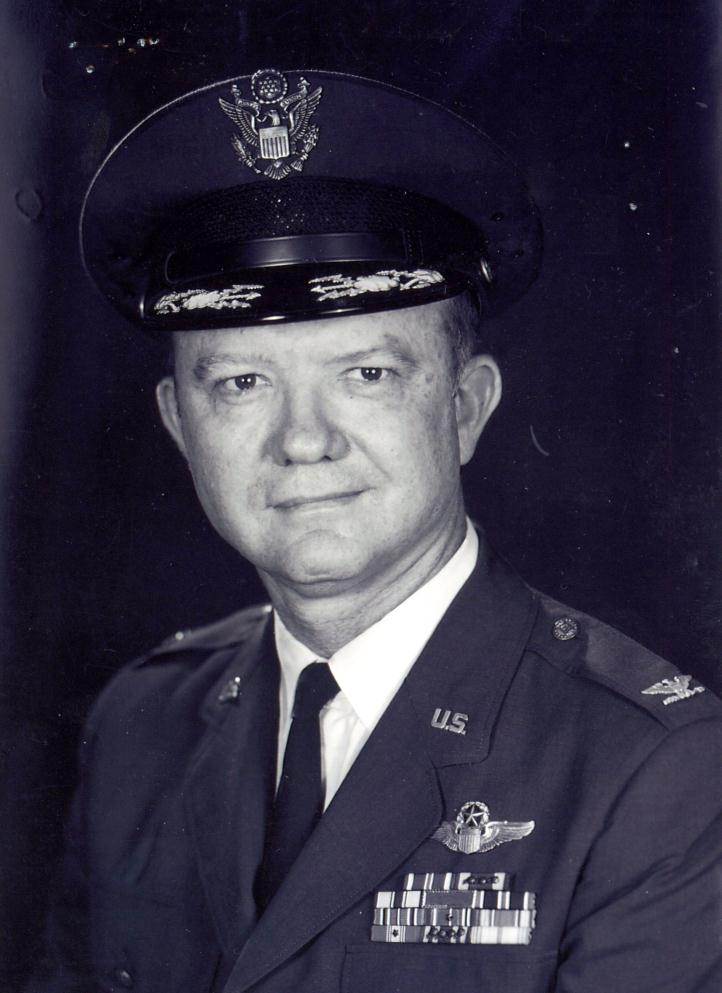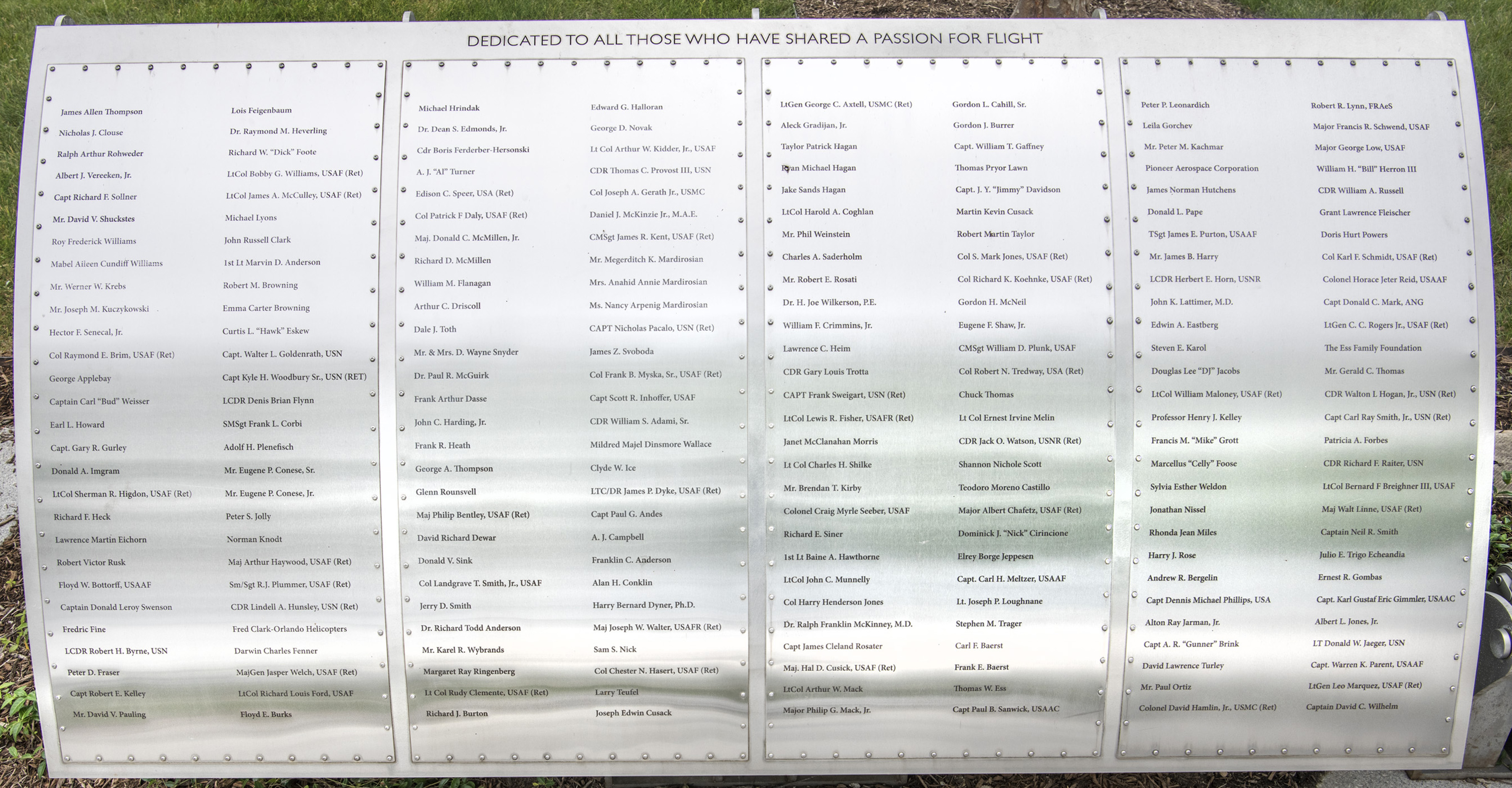Col Raymond E. Brim USAF (Ret)

Foil: 27 Panel: 1 Column: 1 Line: 12
Wall of Honor Level: Air and Space Sponsor
Honored by:
Ms. Christine Brim
AIR FORCE CAREER OF COL. RAYMOND E. BRIM (RET)
BRIEF OUTLINE
I was born in Salt Lake City, Utah in 1922 and grew up in a little mining town in the middle of the state. Then my life changed on 7 December 1941 from being a student at the University of Utah to enlisting in the Army Air Corps program on 22 January 1942. I had just turned 19. After fighter pilot training in Arizona and California, I was assigned to be a co-pilot on a B-17. The transition from being trained as a fighter pilot to becoming co-pilot on a B- 17 was not what I desired, but I was in the Army now. Our bomber training began in Casper, Wyoming, and then continued on to Salina, Kansas. Pat Condon, a student at the University, and I were married on 7 December 1942 and were able to be together for three months before I left for overseas.
Because part of the crew got the measles while in Salina, thereby delaying our departure, I had a chance to check out as first pilot but still continued on as a co-pilot. We finally arrived in England after a long 16-day route via South America and Africa.
We were assigned to the 92nd Bomb Group of the 8th Air Force, one among the first replacement crews to arrive in England. I flew as co-pilot for 5 missions before I got my own crew. But after two more missions, we were taken off combat to train with the Royal Air Force in the use of radar to go into the Pathfinder program. I completed my 25 raids on 18 March 1944, with a total of 172 hours of combat flying.
In 1948, 1 participated in project "SANDSTONE," the second atomic energy test on Eniwetok proving grounds, Marshall Islands. Our mission was to gather particulates within an atomic cloud. The information we gathered helped evaluate the first Russian atomic bomb explosion that took place in January 1949.
1950 was a year of separation from my family with a tour on the Aleutian Islands starting at Cold Bay, then Umnak and ending up on Shemya. On Shemya I was the commanding officer, in the rank of Captain, which proved to be a challenge with 600 men and the mission of supporting the Korean War. Shemya was a stopover on the Great Circle Route between the United States and Japan.
After my tour on the Aleutians, I was assigned to Purdue University to be an instructor in the Air Force ROTC program. There I experienced three years of many challenges but still had one of the most enjoyable tours we had experienced to date.
Headquarters USAF in the Pentagon as part of the Manpower and Organization Directorate was my next tour, starting in 1 954. Working as a member of the Air Staff and dealing with the major commands demanded more comprehensive staff work and coordination with the various directorates. It was a wonderful learning experience.
Overseas again in 1957, to Japan and this time with my family. Flying C-124s out of Tachikawa was a challenge because of the short runway. I ended up as chief of the Manpower and Plans division. Three years of evenings teaching English to Japanese students at our home was perhaps our most rewarding experience. We gained much more than we gave as we learned about the individual Japanese and their culture.
In 1960, it was back to the United States to attend the Air Force Command and Staff College at Montgomery, Alabama. I worked very hard as a student and ended up being designated a Distinguished Graduate.
My next assignment was back to Headquarters USAF, this time in the Personnel Plans and Programming Directorate. It was one of my most challenging jobs, insuring that different enlisted career fields within the Air Force had a balance of promotions against the requirements. The job required many briefings, from the Air Staff up to the Chief of the Air Force. It was a continual battle with the Department of Defense in an effort to gain more promotions for the enlisted men.
In 1965, 1 went back to Montgomery, Alabama for the Air War College. It was an unusual educational experience but extremely interesting because of the nationally known speakers who participated. Using my prior experience, I did my thesis on Enlisted Promotions within the Air Force.
Following the War College, I was assigned to the Air Force Technical Applications Center (AFTAC), Washington, DC. AFTAC'S mission was to maintain a global network of subsurface, surface, airborne, and space based sensors and analytical laboratories that provide national authorities with technical measurements with which to monitor foreign nuclear testing. I headed the Operations Division. This division was responsible for the manning and operation of detachments stationed throughout the world to insure mission accomplishment. The testing of nuclear devices by Russia, China and France were our main concern but we trusted no nation and had the capacity to monitor all nations that had the potential of developing nuclear weapons.
My last assignment was to be the commanding officer of the AFT AC units throughout the Middle East, Africa, Europe and other remote locations. I had highly qualified people working for me and was able to trust them fully to insure mission accomplishment. The last five years of my Air Force career, being stationed in Wiesbaden, Germany, was one of the most rewarding and enjoyable assignments of my 33 years of service. I finished my career with over 4000 flying hours, 1000 of these in single engine jets.
Awards: Two Legions of Merit, One Distinguished Flying Cross, Four Air Medals, The Air Force Commendation Medal, Two Unit Citations and others.
Wall of Honor profiles are provided by the honoree or the donor who added their name to the Wall of Honor. The Museum cannot validate all facts contained in the profiles.
Foil: 27
All foil images coming soon.View other foils on our Wall of Honor Flickr Gallery
